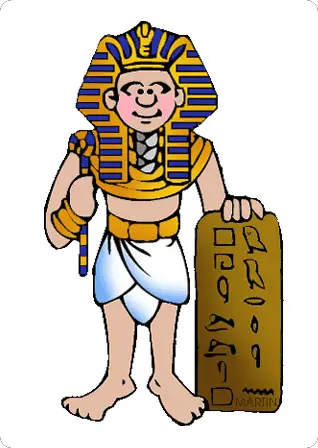Ramesses II
Who was Ramesses II?
Ramesses II was a pharaoh of Egypt, who ruled from 1279-1213 BC.
He was the third pharaoh of the Nineteenth Egyptian Dynasty and is arguably the greatest pharaoh of all Egyptian history.
Ramesses II was born around 1303 BC. He was the son of Pharaoh Seti I, who became pharaoh when Rameses was just five years old.
At the time, Ramesses was second in the line of succession, because he had an older brother who was supposed to become the next pharaoh instead of him.

However, when his brother died, Ramesses became the next in line for the throne – and so, between the ages of 14 and 25, Ramesses was educated in all matters of ruling, religion, and governance by his father and his advisors.
Ramesses got married in his teenage years to his two main wives, Nefertari and Isetnofret. (At the time, it was common for pharaohs to marry multiple foreign princesses, to establish good trade links between nations.)
Although Isetnofret doesn’t have much of a place in history, Nefertari would become a powerful stateswoman following Rameses’ ascension to the throne.
What was Rameses II known for?
Ramesses II was known particularly for his fighting ability.
As the teenage Prince of Egypt, Ramesses fought alongside his father in military campaigns, rising to the position of general at the young age of 22; during his reign as pharaoh, he continued to lead the Egyptian armies to victory against enemies which included the Hittites and Syrians.
However, aside from wartime success, Ramesses II is also known for the grand structures built during his reign.
Under his rule, many of the country’s oldest temples were rebuilt, and some were replaced with new buildings of his own.
He also oversaw the construction of the Ramesseum (a temple complex located near the city of Thebes), the Abu Simbel (another temple complex), and a city called Pi-Ramesses, which was one of the most powerful cities in the world during Rameses’ rule.
Many of Ramesses II’s structures have gone down in history as shining examples of Egyptian architecture.

What was the Battle of Kadesh?
Ramesses’ most famous battle, fought in 1274 BC, was the Battle of Kadesh. The Battle of Kadesh was fought between Ramesses II’s army and the Hittites of Anatolia (a country now known as Turkey.)
This battle resulted from Ramesses’ aggressive policy of expansion, which saw him invading Syria and its neighboring Asian countries.
As part of this conquest, the Egyptian and Hittite armies clashed for control of Kadesh, a city of great strategic importance to the Syrian invasion.
This battle has been labeled a ‘draw’ by many historians: though Ramesses II had fewer troops, his army won the battle, but afterward failed to conquer the city they’d come for.
Similarly, although the Hittites failed to win the day, they succeeded in protecting their city from Egyptian conquest. In 1258 BC, the Hittites and Egyptians signed the world’s first-ever peace treaty, and a productive trading environment was established between their two nations.
The battle is also significant because it’s one of the first in history for which we’ve found written strategic plans.
This gives historians great insight into how the Egyptians carried out their expeditions of warfare.
What was Ramesses II’s legacy?
Rameses’ reign of 66 years came to an end when he died in 1213 BC at the age of 90.
He was buried in the Valley of the Kings alongside many of his ancestors, but today his mummy sleeps in the Cairo Museum.
Rameses was rumored to have fathered over 200 children during his life, with a shocking number of wives and mistresses; but it was his thirteenth son Merneptah who ascended to the throne following his death, and continued his father’s work.
Facts about Ramesses II:
- Ramesses II was a pharaoh of Egypt, who ruled from 1279-1213 BC.
- He was the third pharaoh of the Nineteenth Egyptian Dynasty and is arguably the greatest pharaoh of all Egyptian history.
- He was the son of Pharaoh Seti I, who became pharaoh when Rameses was just five years old.
- Even though Rameses II wasn’t his father’s oldest son, he became next in line for the throne after the death of his brother. He began his royal education a little later than most because of this – between the ages of 14 and 25, Rameses was educated in all matters of ruling, religion, and governance by his father and his advisors.
- Ramesses got married in his teenage years to his two main wives, Nefertari and Isetnofret.
- Ramesses II was known particularly for his fighting ability. As the teenage Prince of Egypt, Rameses fought alongside his father during wartime, rising to the position of general at the young age of 22.
- Aside from his military prowess, Ramesses II is also known for the grand structures built during his reign.
- Rameses’ most famous battle, fought in 1274 BC, was the Battle of Kadesh.
- The Battle of Kadesh was fought between Rameses II’s army and the Hittites of Anatolia, and has been labeled as a ‘draw’ by many historians.
- Rameses’ reign of 66 years came to an end when he died in 1213 BC at the age of 90.
QUESTIONS:
- How long was Ramesses II’s reign?
- 66 years.
- At what age did Ramesses II become next in line for the throne?
- 14
- What were Ramesses’ two main wives called?
- Nefertari and Isetnofret.
- What was Ramesses’ most famous battle called?
- The Battle of Kadesh.



